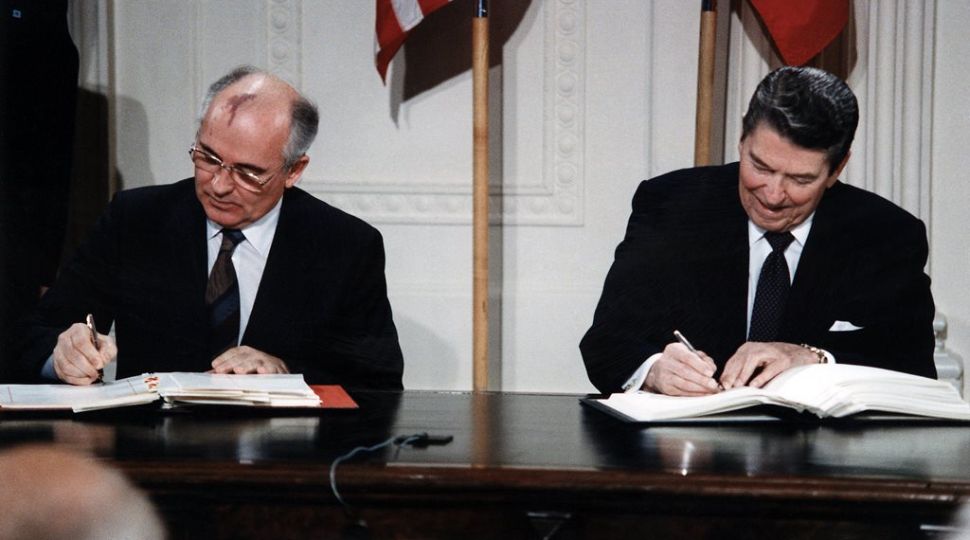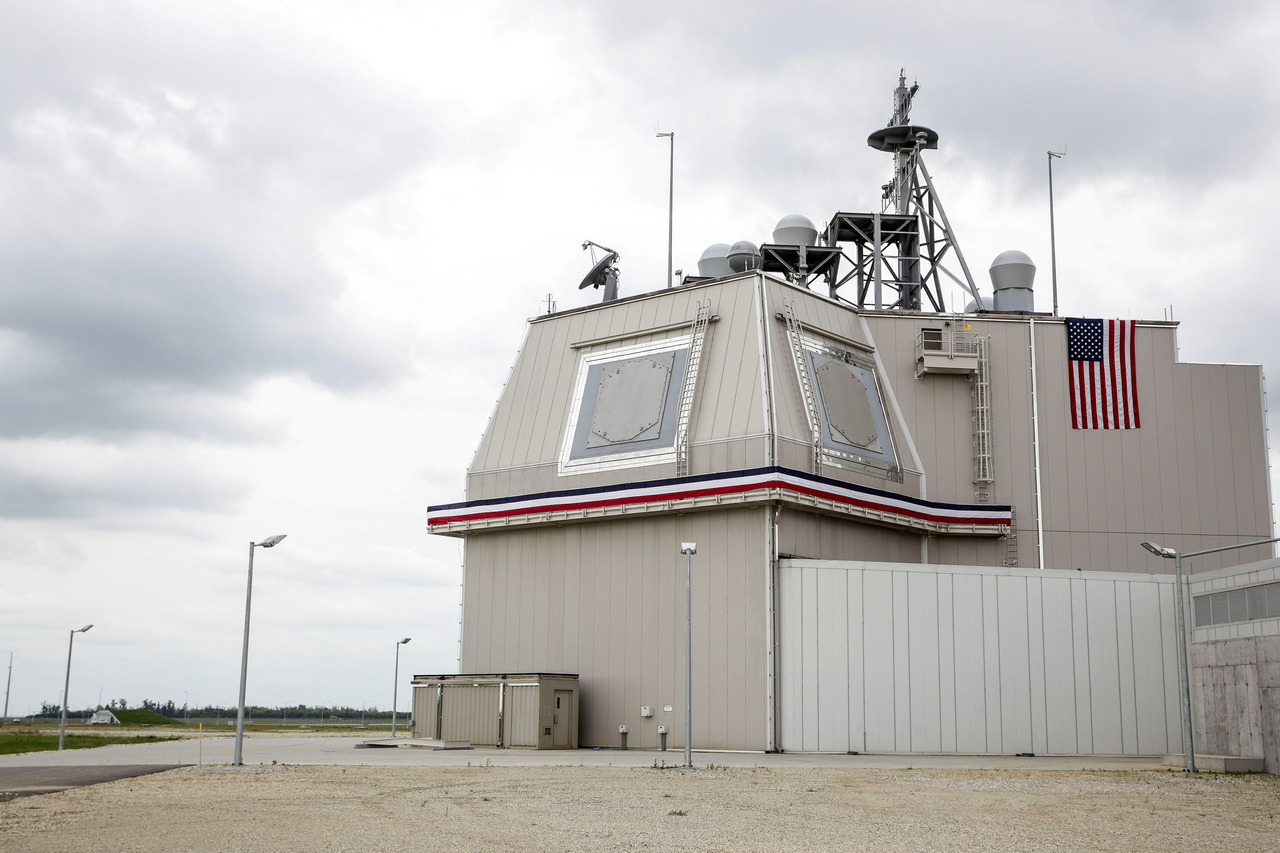U.S. Announces That It will Deploy Medium-Range Missiles to Germany
On 10 July, during the NATO summit in Washington, the United States and Germany announced that U.S. conventional medium-range ground-launched missiles will be present in Germany from 2026. This will strengthen the Alliance’s defence capabilities and deterrence of Russia. However, it is not certain whether these plans will be implemented, especially in view of possible changes in U.S. policy after the November presidential election. Moreover, the deployment of these U.S. missiles in Germany will not negate the need for European states to strengthen their own missile capabilities.
.png) AA/ABACA / Abaca Press / Forum
AA/ABACA / Abaca Press / Forum
The deployments of U.S. surface-to-surface missiles in Germany announced on 10 July are to be initially intermittent and then permanent. They will include hypersonic missiles still under development, probably “Dark Eagle” systems with a range of about 2,700 km, and Typhon launchers already in service and armed with subsonic Tomahawk cruise missiles with a range of more than 1,600 km and supersonic SM-6s with a range of less than 500 km. The SM-6s are additionally capable of striking ships. Germany will likely host one Dark Eagle battery (four launchers, each with two missiles) and one Typhon battery (four launchers, each with four missiles). Together with spare munitions, the total will presumably be several dozen missiles.
The U.S. began developing these missiles after withdrawing in 2019 from the INF treaty, which was violated by Russia. This 1987 U.S.-Soviet agreement banned the possession of land-launched missiles with ranges between 500 and 5,500 km. Before the INF treaty came into force, the U.S. maintained hundreds of such systems in Europe. At the time, they were armed with nuclear warheads, which stemmed in large part from NATO’s reliance on the ability to use nuclear weapons massively to repel an invasion by numerically-superior Warsaw Pact armies. Meanwhile, recently the U.S. has chosen to develop missiles armed only with conventional warheads and not to adapt them to carry nuclear weapons. Today, the Alliance plans to repel conventional aggression with non-nuclear forces, and the increasing precision of missile systems gives it the ability to effectively strike a wider spectrum of targets without having to employ nuclear warheads. At the same time, the number of U.S. medium-range missiles currently scheduled for deployment in Europe—and also the number of locations of their stationing—is limited by the high demand for such weapons in the Indo-Pacific, declared by the U.S. as a priority region.
Choice of Deployment Location
The choice of Germany as host of the new U.S. missiles was probably a result of a mix of political, military, and financial factors. The decision can be seen as confirmation of the strategic partnership between the two countries. Germany, which is the EU’s largest economy, is seen by the Biden administration as the most important ally in Europe. Moreover, it has hosted the largest contingent of U.S. forces in Europe for decades. The U.S. decision was most likely also motivated by a desire to benefit from the extensive military infrastructure that has been present in Germany since the Cold War. Germany already hosts the American units and commands to which the new medium-range missiles will be subordinated—the reactivated 41st Artillery Brigade (2018) and the re-established 56th Artillery Command (2021) and a new Multi-Domain Task Force.
The Dark Eagle and Tomahawk missiles have sufficient range to strike targets in western Russia from German territory. As they are based on mobile launchers, it will also be possible to move them further east in a crisis (e.g., to use the SM-6). At the same time, both the U.S. and Germany may have feared that permanently deploying these systems farther east, for example, in Poland or another country on the Eastern Flank, would be too escalatory towards Russia (both for symbolic reasons and given the even faster and deeper capabilities of a strike on Russia than if the missiles were launched from Germany).
Political Significance in Deterring Russia
The announcement of the deployment of U.S. missiles capable of striking targets in Russia directly from Germany is an important political signal that strengthens NATO’s deterrence. It reflects a sharpening of the German and U.S. stance towards Russia following its 2022 full-scale invasion of Ukraine. When Trump initiated the exit from the INF Treaty in 2018-2019, scepticism about this decision and the possible deployment of new missiles in Europe was voiced by both some senior members of the SPD (currently the largest party in Germany’s governing coalition, to which Chancellor Olaf Scholz belongs) and the U.S. Democratic Party (from which Biden hails). This stemmed from concerns about the reaction of both Russia and the publics of the Alliance countries, including Germany. The deployment of U.S. nuclear missiles in Europe in the 1980s was accompanied by massive anti-nuclear protests (tensions over this also contributed to the fall of the government of Chancellor Helmut Schmidt of the SPD, who had advocated the stationing).
Nevertheless, an even stronger signal would be the deployment of U.S. medium-range missiles in several NATO states, including those most vulnerable to Russian aggression, such as Poland. During the Cold War, the Federal Republic of Germany (FRG) was such a state. Furthermore, in line with Germany’s efforts at the time, NATO decided in 1979 to station U.S. medium-range missiles also in Belgium, the Netherlands, the United Kingdom, and Italy (a total of 572 missiles). This was to emphasise the unity of the Alliance in the face of the threat from the Soviet Union and its possible response to these dislocations.
Enhancement of NATO Defence Capabilities
Ground-launched medium-range missiles will enhance NATO’s ability to counter Russian air defences and strike targets deep in enemy territory (including ammunition and fuel depots, air bases, or command posts). Hypersonic missiles in particular will bring added value, as their very high speed will increase the chances of effectively striking mobile targets (e.g., missile launchers or bombers being prepared for attack). The deployment of Tomahawk land-based launchers in Europe increases the possibility of providing support to allies with such missiles also in the event of U.S. involvement in a war with China. Although the U.S. has several thousand sea-launched Tomahawks, in a two-front war scenario, most of the ships equipped with them would be engaged in the Indo-Pacific (as would most aircraft with shorter-range cruise missiles).
Nevertheless, the relatively small number of missiles planned to be deployed in Europe and the risk of drawing other U.S. forces away to the Indo-Pacific region call for strengthening of NATO’s European members own missile forces (including medium-range systems). They are much smaller and less capable than the American arsenal, and the U.S. expects these gaps to be filled (as noted by, among others, German Defence Minister Boris Pistorius). A promising step in this direction is the signing of a letter of intent by France, Germany, Poland, and Italy during the summit in Washington regarding the development of deep-strike precision missiles.
Enhanced NATO conventional missile capabilities will also improve its ability to support a nuclear response to a nuclear attack, but will not negate the need to additionally strengthen NATO’s nuclear forces.
Perspectives
If Donald Trump wins the U.S. presidential election this November, the plans to deploy medium-range missiles in Germany may be abandoned. This is probable given Trump's criticism of both NATO and Germany, as well as the fact that both in his inner circle and in the Republican Party the isolationists and advocates of focusing U.S. military capabilities on China at the expense of Europe are rising in position. A second Trump administration could change Biden’s plans by cancelling the deployment of missiles to Europe altogether, although changing their stationing locations in Europe or reducing their numbers are not excluded.
A much lesser risk to the plans is related to next year’s Bundestag elections. Only some SPD MPs are questioning Scholz’s decision on accepting U.S. missiles, while it is supported by the opposition CDU/CSU, which leads in the polls. The Greens, one of SPD’s coalition partners, accuse the Chancellor of a lack of consultation and public discussion, but they have not explicitly opposed the plans. They deployment is opposed by the far-right Alternative for Germany (AfD) and the far-left Die Linke.
As in the 1970s and 1980s, Russia will try to pressure the U.S. and Germany to abandon the deployment and stoke divisions over it through threats and disinformation. It already portrays the U.S.-German announcement as an aggressive and escalatory move and threatens a military response, including the deployment of its own medium-range missiles in Europe. In reality, however, Russia has long been expanding its arsenal of missiles capable of nuclear and conventional strikes against NATO countries (including by possessing and developing systems formerly banned by the INF Treaty). It is also exploiting them to try to intimidate the Alliance, one recent example being the Russian decision to deploy nuclear weapons to Belarus.




.jpg)
